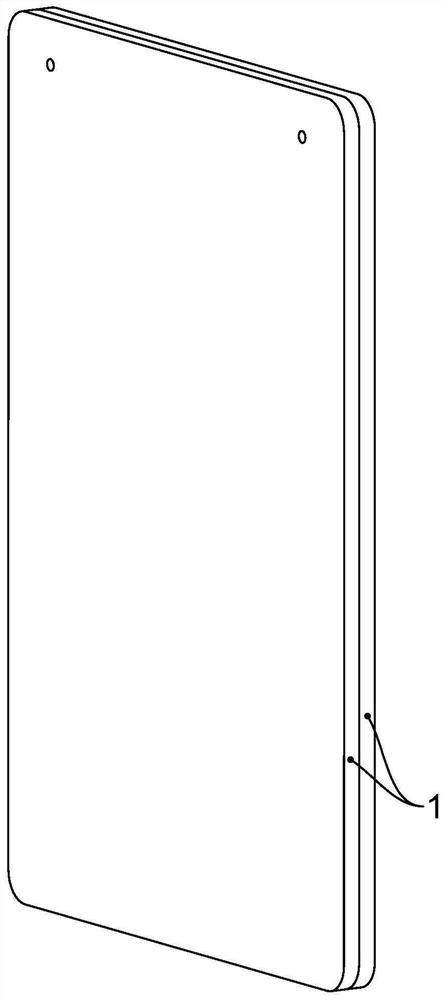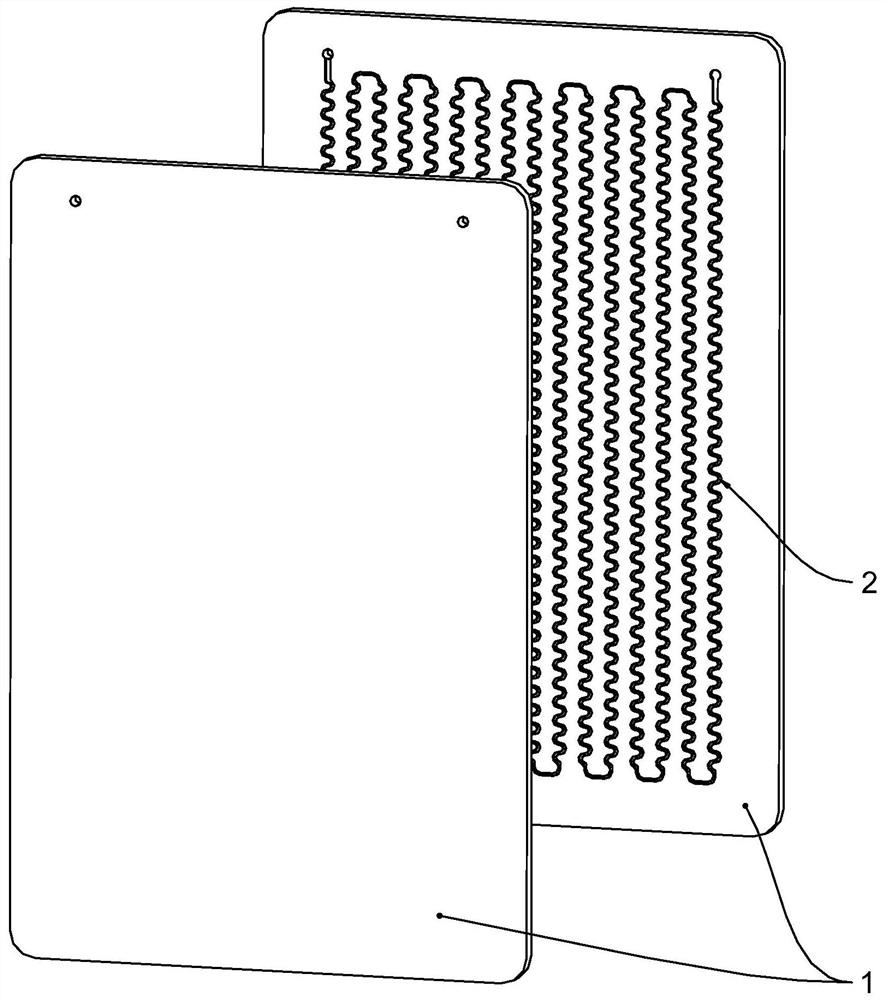Manufacturing method of silicon carbide micro-reaction assembly and silicon carbide micro-reaction assembly
A manufacturing method, a technology of silicon carbide, applied in chemical instruments and methods, chemical/physical/physical chemical reactors, chemical/physical/physical chemical fixed reactors, etc., can solve the problem of difficult control of micro-flow and silicon carbide micro-reactions It is difficult for components to precisely control the width and depth of microchannels, etc., to achieve precise control, good corrosion resistance, and good wettability
- Summary
- Abstract
- Description
- Claims
- Application Information
AI Technical Summary
Problems solved by technology
Method used
Image
Examples
Embodiment 1
[0042] The silicon carbide micro-reaction assembly includes two reaction plates 1 (such as Figure 1-2 shown), wherein the thickness of the reaction plate 1 is 5 mm, the width of the microchannel 2 is 0.1 mm, and the depth is 0.2 mm.
[0043] The specific manufacturing steps are:
[0044] (A) Plain embryo forming: use silicon carbide to spray granulate powder, and directly isostatic pressing to obtain a green embryo;
[0045] (B) Elemental embryo processing: according to the design size, the reaction plate element embryos are processed in a plane, and the microchannels are not processed;
[0046] (C) High-temperature sintering: the plate obtained in step (B) is sintered under vacuum micro-negative pressure, and the sintering conditions are: 2100°C-2150°C, 0.5 h;
[0047] (D) Reaction plate processing: laser processing technology is used to process microchannels on the required reaction plates, the width of the microchannel is 0.1mm, the depth is 0.2mm, and the inlet and outl...
Embodiment 2
[0050] The silicon carbide micro-reaction assembly includes three reaction plates 1 and two heat exchange plates 3 (such as Figure 3-4 The thickness of the reaction plate 1 in the middle is 8 mm, the thickness of the two reaction plates 1 on both sides is 10 mm, the width of the microchannel 2 is 0.6 mm, the depth is 0.8 mm, and the thickness of the heat exchange plate 3 The width of the heat exchange medium channel 4 is 9 mm and the depth is 3 mm. It is used between the reaction plate 1 and between the reaction plate 1 and the heat exchange plate 3. The welding temperature is 1400 ℃, and the welding pressure is 10 bar.
[0051] The specific manufacturing steps are:
[0052] (A) Plain embryo forming: use silicon carbide to spray granulate powder, and directly isostatic pressing to obtain a green embryo;
[0053] (B) Preform processing: according to the design size, the reaction plate blank is processed on a plane without processing microchannels; according to the design siz...
Embodiment 3
[0060] The silicon carbide micro-reaction assembly includes two reaction plates 1 (such as Figure 1-2 shown), the thickness of reaction plate 1 is 8 mm, the width of microchannel 2 is 0.8 mm, and the depth is 1 mm.
[0061] Ni-Fe-Cr-Mo Hastelloy foils with a thickness of 0.1 mm are used for welding between the two reaction plates 1 at a welding temperature of 1350 °C and a welding pressure of 30 bar.
[0062] The specific manufacturing steps are:
[0063] (A) Plain embryo forming: use silicon carbide to spray granulate powder, and directly isostatic pressing to obtain a green embryo;
[0064] (B) Elemental embryo processing: according to the design size, the reaction plate element embryos are processed in a plane, and the microchannels are not processed;
[0065] (C) High temperature sintering: the plate obtained in step (B) is sintered under vacuum micro-negative pressure, and the sintering conditions are: 2100°C-2150°C, 1 h;
[0066] (D) Reaction plate processing: The mi...
PUM
| Property | Measurement | Unit |
|---|---|---|
| width | aaaaa | aaaaa |
| depth | aaaaa | aaaaa |
| thickness | aaaaa | aaaaa |
Abstract
Description
Claims
Application Information
 Login to View More
Login to View More - R&D
- Intellectual Property
- Life Sciences
- Materials
- Tech Scout
- Unparalleled Data Quality
- Higher Quality Content
- 60% Fewer Hallucinations
Browse by: Latest US Patents, China's latest patents, Technical Efficacy Thesaurus, Application Domain, Technology Topic, Popular Technical Reports.
© 2025 PatSnap. All rights reserved.Legal|Privacy policy|Modern Slavery Act Transparency Statement|Sitemap|About US| Contact US: help@patsnap.com



